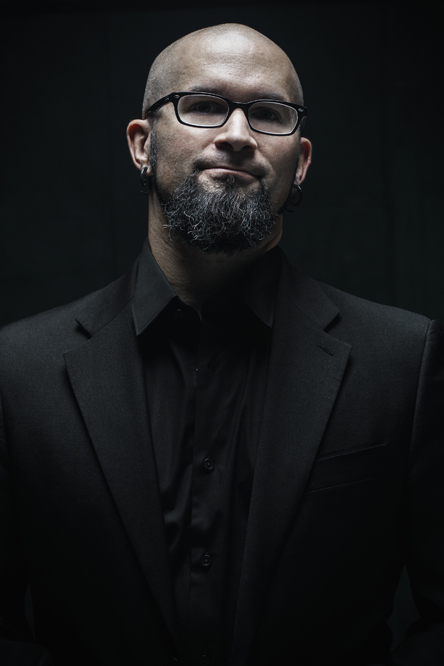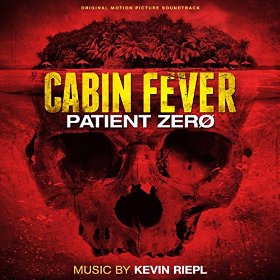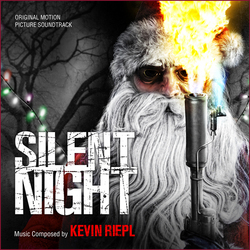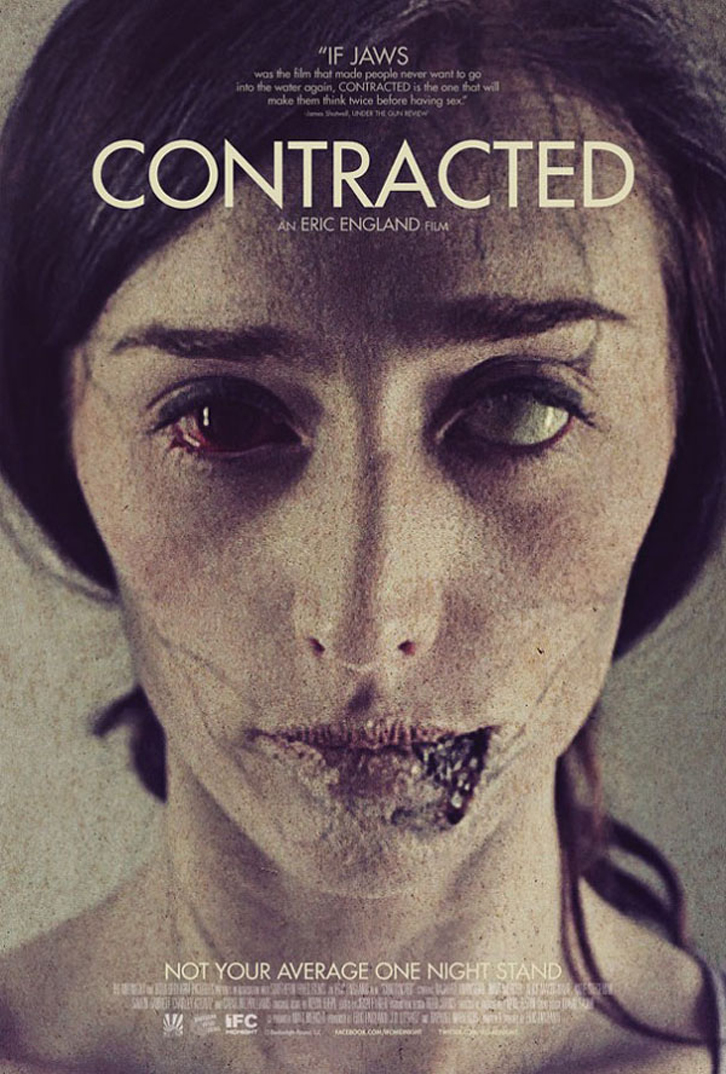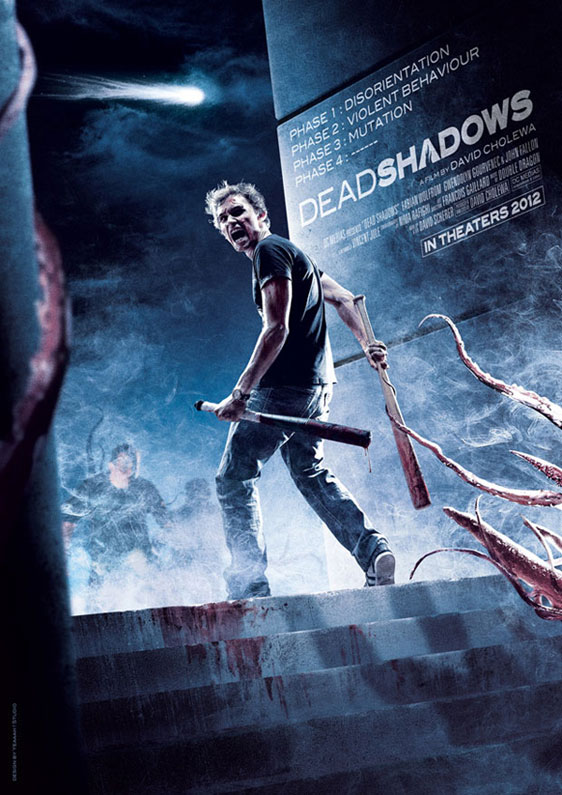The Horror & The Hero Film Music of Kevin Riepl
Interviewed by Randall D. Larson
Kevin Riepl is an award-winning composer writing for multiple entertainment genres. His engaging, hybrid, and atmospheric scores have enhanced numerous films including THE NIGHT CREW, CABIN FEVER: PATIENT ZERO, SILENT NIGHT, CONTRACTED and THE ABCs of DEATH. In addition he has scored cult hit sci-fi shorts such as ATROPA, HENRI, and RUIN. Riepl as well is noted for composing the epic, signature scores for blockbuster video games including Gears of War, the Unreal series, Aliens: Colonial Marines, and many more. Most recently he scored Warner Bros. Animation’s movie BATMAN UNLIMITED: ANIMAL INSTINCTS and BATMAN UNLIMITED: MONSTER MAYHEM which were both nominated for Outstanding Achievement in Music at the 2016 Annie Awards. Upcoming projects include Warner Bros. animated movie BATMAN UNLIMITED: MECHS VS. MONSTERS, Eric England’s black comedy-thriller GET THE GIRL, and Battleborn, the new first-person shooter from the creators of Borderlands.
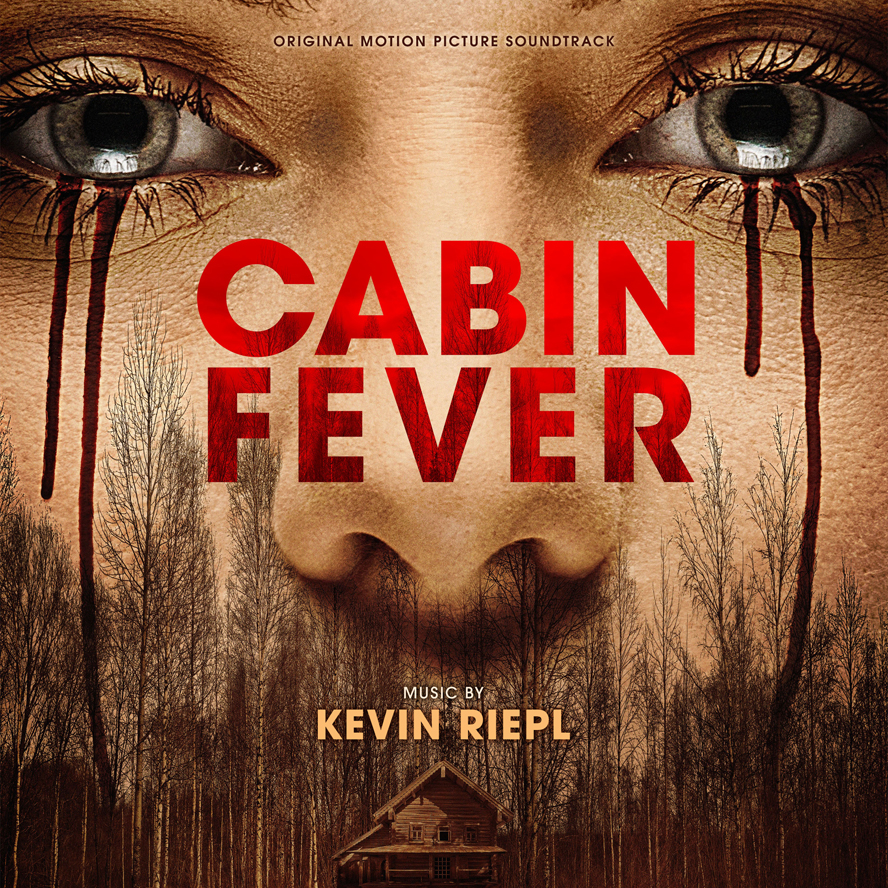 Q: How did you develop your creepy musical design for CABIN FEVER: PATIENT ZERO? Did the fact you were scoring the third film in an ongoing franchise affect your approach to the score, or did the filmmakers offer you a free hand in scoring the film?
Q: How did you develop your creepy musical design for CABIN FEVER: PATIENT ZERO? Did the fact you were scoring the third film in an ongoing franchise affect your approach to the score, or did the filmmakers offer you a free hand in scoring the film?
Kevin Riepl: Prior to starting on the score I had already decided I wanted to try to keep it as organic as possible and not very traditional, in respect to not keeping it limited to traditional orchestra. With that in mind, I chose some instruments and sampled sounds I would use as the core sound for the film. Some of my chosen instruments were a banjolele (an instrument that is a combination of a banjo and ukulele), violin both plucked and bowed, a cello which was plucked, bowed, hit, smacked and mangled, a bowed acoustic guitar, and an upside down nickel plated Djembe. The reason I say upside down is because rather than using its skin as a traditional percussion instrument, i used it more for its empty interior cavity. Throughout the score you’ll hear this rattling metal sound either to convey a rhythm or tension. To create that sound, I took six unstrung steel guitar strings, tied them together at the string ball end, and used them as a rhythmic instrument inside the cavity of the Djembe.
Since the film was written as a prequel to the other films, the director asked me to come up with something that would fit the beginnings of the story and help support the location. Keeping the score somewhat organic was born from the idea of the story taking place on a remote island in the Caribbean.
Q: The score maintains an atmosphere of growing apprehension and dread. Would you describe your technique in combining these multi-layered tonalities and textures into a sonic fusion that supports the film’s frightening storyline and enhances the audience’s fear factor when watching the film?
Kevin Riepl: From the start of the film, we know something is up. There is no secret of where things are going to lead. It was basically all a matter of how we were going to get there. Right from the beginning I needed to create atmospheric tension and dread. For a lot of the underlying tension I relied on synth and dissonant wavering drone sounds which can be immediately heard in the opening cue of the soundtrack. The more the story evolved, the more elements I would introduce musical material in both the organic realm and in the area of synth-and-percussion. Throughout the film I used a minor 9th motif, whether it’s plucked on the string instruments or heavily bowed on both the cello and violin. That motif was used a lot with constant changing time signatures in order to help prevent the audience from settling in rhythmically and getting comfortable with what’s happening. I’ve always thought if you can keep the audience off balance with music in a stressful scene it will help make that scene stronger and more effective.
Q: The producer of PATIENT ZERO went on to produce the new remake of the original CABIN FEVER. Did he recommend you to director Travis Z. or how did you get involved? I understand there was some initial hesitation with using people associated with the prior films, but your work proved irresistible.
Kevin Riepl: I also heard they were hesitant to bring anyone back as well, but didn’t know that until well after the score and film were completed. This is how I understood it went down: After Travis Z watched a short film I scored and liked the music, especially the end credit music I created, he brought my name up to the producer, Evan Astrowsky. Evan mentioned, “That’s Kevin Riepl, he did the score for PATIENT ZERO”. At that point I believe Travis then temped his first few edits of the film with some of my music from my PATIENT ZERO score. After that Evan shot me an email about it and asked me to come in for a viewing of what they had so far. In all honesty I was a bit apprehensive at first. Not because of any of the players involved; I loved working with Evan on PATIENT ZERO. It was because I was surprised they were actually rebooting Eli Roth’s horror cult classic using the exact same script. Considering I like Evan and I am always up for meeting new directors and seeing their vision for a project and their passion for the craft, I agreed to meet up with them to take a look at it. I was quite surprised with what they had. Travis put together something that looked beautiful, something that definitely resembled the original but had its own look and feel. It was new and Travis had a contagious passion for the project and content. After watching and talking with Travis in length about his vision, I definitely wanted to work with him.
Q: In order to match the filmmaker’s new vision for CABIN FEVER, how did you decide the kind of musical atmosphere/motif/design components of the score and how you would develop them across the journey of the story?
Kevin Riepl: Unlike the previous CABIN FEVER I scored, we agreed that more of a traditional orchestral sound would work well with this one, while also blending in electronic elements. Other than the first section of the opening cue of the film, which is very similar to the opening cue to PATIENT ZERO, the entire score heads off in a new direction. The score remains very low-key and more subliminal in the first part of the film. It isn’t until they drive to the cabin after running into the locals that some of the more melodic and signature parts of the score are introduced. From that point on, the film and story begin to have its own sound. There is one main melody that is carried throughout the film and while composing it, it sort of became the ensemble cast’s theme; the group theme. The melody or variation of the melody can be heard in the cues, “To the Cabin,” “Accident,” and “No One’s Home” all revolving around a simple minor 6th chord.
Q: Would you describe your technique in integrating newly-created sounds, existing musical samples, found sound, and live orchestral element to build the thickly layered, shifting, progressive score for CABIN FEVER?
Kevin Riepl: I wouldn’t say I employ a standard technique or even a formal method or approach. However, when creating a palette for a score, I just make sure that the sounds work together in a musical environment and that any two are not fighting for the same sonic space. When creating new sounds for this film, the purpose was to use them more for tonal setting, tension, or certain rhythmic events. Most of the time, I’ll hear something, whether it be a sound I need to record or an existing recorded sample, and if it is unique or interesting I will find a way to put that in the score. Sometimes it becomes a springboard for the sound of the film or it becomes a supplement for existing ideas.
Q: How did you treat the main characters, musically, as far as building sympathy for them and enhancing audience identification with those would ultimately survive?
Kevin Riepl: I believe this score had more of an ensemble theme rather than individual character themes. There is so much going on in this film that I believe if each of the main characters had their own personal theme or motif, it would not sound cohesive and sound like the score is jumping all over the place musically. This ensemble theme I mentioned would be then contoured to each of the situations any character was placed in. So my idea was to still treat the characters individually but with a different aspect and/or variations of the main ensemble theme idea.
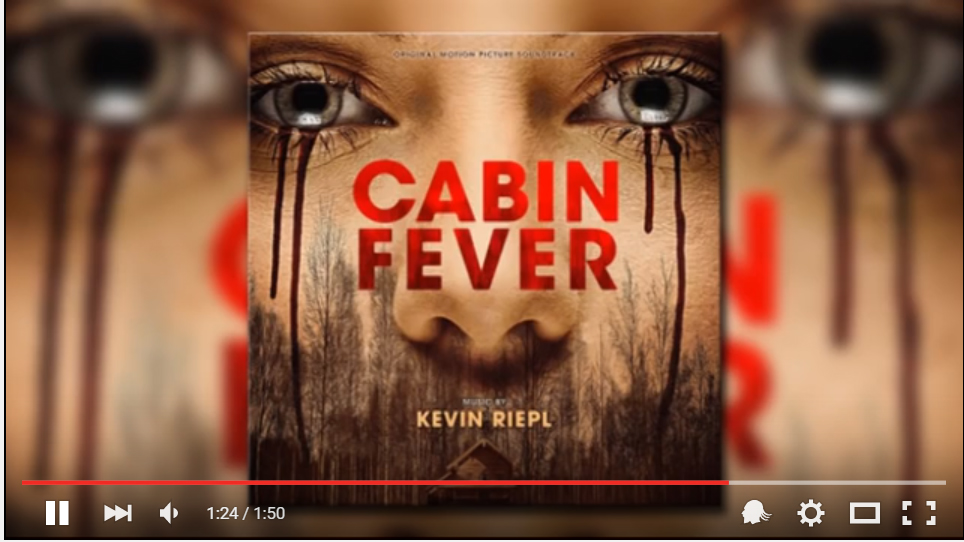
Q: SILENT NIGHT was a very loose remake of 1984’s SILENT NIGHT, DEADLY NIGHT. How did you approach scoring the film’s visceral slasher horror aspects while acknowledging the yuletide season in which it takes place?
Kevin Riepl: Well, with sleigh bells of course! At the start of the project I knew I wanted to do something completely different from the original. The original had a wonderful electronic score by Perry Botkin Jr. I didn’t want to try to emulate that sound nor did I think Steven C. Miller’s version called for it. So I took a traditional orchestral approach. I grew up on horror films, many of which featured fantastic orchestral scores by Chris Young. So when it was decided upon that this film would work well with that style, I was thrilled. As for the holiday influence in the score, when I was in talks about the score with the director Steven C. Miller, he wanted a twisted version of the Christmas carol “Silent Night” to be created and used throughout the score. Something as simple as using the “Silent Night” melody in a minor key rather than the usual major key, along with unsettling bell tones, really captured the eerie dark holiday aspect of the film. Then, of course, there are the sleigh bells.
Q: How did your score for CONTRACTED evolve? How did you decide on the right tone and texture for this film and what elements of the story did you find most meaningful to orient the music around?
Kevin Riepl: CONTRACTED was a beautiful film to work on. The tone of the film and the idea of the sonic palette was a collaborative effort between myself and director Eric England. We wanted the music in the opening of the film to support the main character, Samantha’s soft, innocent, and naive persona. So the sound of the score really comes from what she goes through, from her innocence and naivety, trying to find love and fit in, to complete deterioration. The score develops, or I should say, diminishes or erodes along with the main character Sam.
Q: How did you become involved in the French sci-fi thriller DEAD SHADOWS – and would you describe your musical approach to this film and its comet-borne horrors?
Kevin Riepl: David Cholewa, the director, contacted me as a result of liking my work on the video game Gears of War and from a mutual friend who recommended me for the film. If I recall correctly, at first David was only looking for a piece of music for his main title sequence. I wrote about a three and a half minute piece for them. Months had passed and they came back to me asking to join the project and create the full score for the film. The sound of the film really stemmed from what I created for the main title sequence, which was a combination of synth and orchestra.
Q: Coming into Warner Animation’s webseries BATMAN UNLIMITED and the two animated films, ANIMAL INSTINCTS and MONSTER MAYHEM – all involving a character who has a long musical legacy in Warner Bros films and television – what kind of mandate did Warners or the show producers give you as far as where they wanted you to go with the theme and episode music?
Kevin Riepl: The BATMAN UNLIMITED web series you mentioned were actually created as eleven separate shorts for each of the BATMAN UNLIMITED features. From my understanding they were created to be used for marketing for the each of the films and the coinciding toy line. The shorts would help introduce the characters before the films were released. Over the course of the three BATMAN UNLIMITED films I scored there were thirty-three shorts. At this time only twenty two have been released. The third set and third feature is set to be released during the 3rd or 4th quarter of 2016.
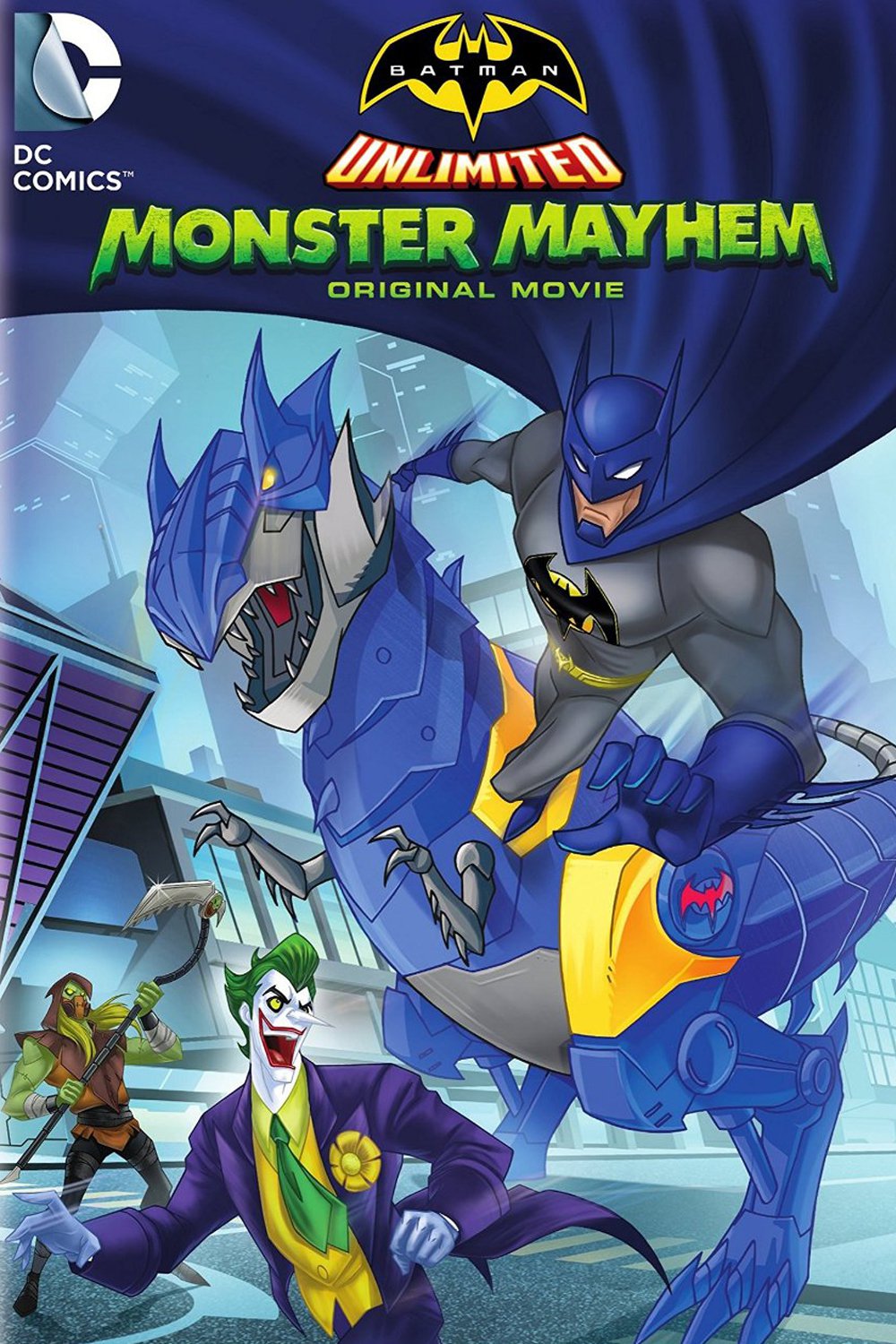 The only real requirement I had when creating the theme and musical scores for this Batman, mainly because it was created for a younger demographic, was to keep it fun and heroic while avoiding becoming too dark. The director and producer liked my ability of creating scores with both traditional and modern influences combined. Other than keeping it fun and not overly dark, I was able to score the films and shorts without many restrictions. I wrote in a style I love. The score was heavily orchestral, which really isn’t a “style,” but the orchestral writing was influenced by but not limited to the lighter action scores of Williams, Silvestri, Korngold, and similar composers. To complement the orchestral side of the score, I incorporated a good amount of modern elements. What I mean by modern, since it’s such a subjective term, is my palette alongside the orchestra consisted of synths; both pads and arpeggiated, drones, percussive looped rhythms and electronica. Even though these sounds and techniques have been around for many years, I suppose they still can be considered modern when you relate them to the centuries old sound of an orchestra.
The only real requirement I had when creating the theme and musical scores for this Batman, mainly because it was created for a younger demographic, was to keep it fun and heroic while avoiding becoming too dark. The director and producer liked my ability of creating scores with both traditional and modern influences combined. Other than keeping it fun and not overly dark, I was able to score the films and shorts without many restrictions. I wrote in a style I love. The score was heavily orchestral, which really isn’t a “style,” but the orchestral writing was influenced by but not limited to the lighter action scores of Williams, Silvestri, Korngold, and similar composers. To complement the orchestral side of the score, I incorporated a good amount of modern elements. What I mean by modern, since it’s such a subjective term, is my palette alongside the orchestra consisted of synths; both pads and arpeggiated, drones, percussive looped rhythms and electronica. Even though these sounds and techniques have been around for many years, I suppose they still can be considered modern when you relate them to the centuries old sound of an orchestra.
Q: How important is the main theme to a series and a character like this? How did you create your own theme for BATMAN UNLIMITED?
Kevin Riepl: I think Batman is always important enough to have his own theme. For this set of films and shorts the theme had its moments but the director and I agreed to not overuse it. For instance, every time Batman either did something heroic or just entered a scene, we felt it wasn’t necessary to state his theme that often. Not to mention, even though it’s called BATMAN UNLIMITED, the films and storylines incorporated many other DC characters with the likes of Nightwing, Green Lantern, Cyborg, Red Robin, and Flash. The films were just as much about them as they were Batman. So having a recurring Batman theme just didn’t seem to work. I can’t say I had a specific method or technique when creating the theme. I just wanted it to be fun with a strong melody, and short and to the point.
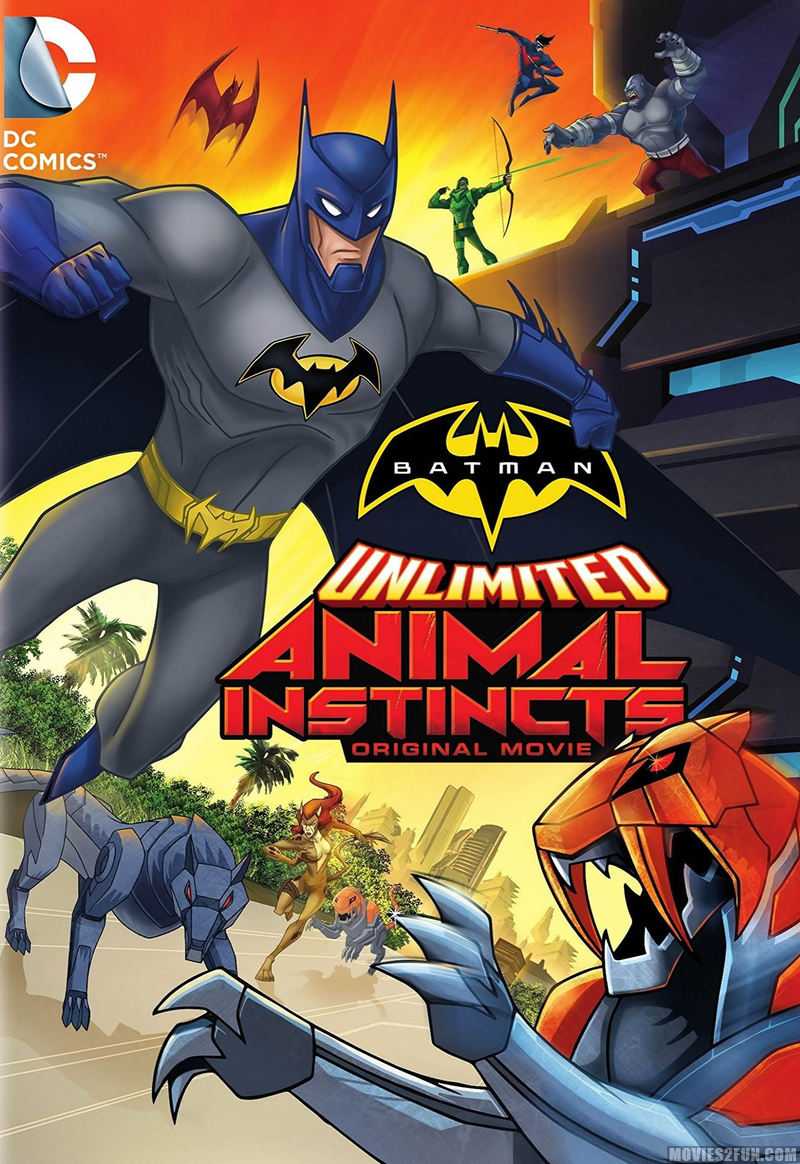
Q: What kind of thematic development did the webseries and the animated feature films afford, as far as accommodating classic and new villains and other characters, and how did you bring in the main theme as a heroic motif through the ongoing storylines?
Kevin Riepl: All three films had a classic villain, whether it is the Joker, Penguin, or Mr. Freeze. They would get their own new original theme created for these films, and it would definitely be recurring throughout the story. In all films each of the main villains assembles a team of other classic DC villains, including Scarecrow, Bane, Cheetah, Killer Croc, and many others. Joker and Penguin definitely received their own themes and depending on how long or how much screen time each of the other villains had, would determine if they received their own theme or motif. For the more important heroic moments, where all the heroes are a part of, I would usually accent that with a short passage of the chordal movement that supports the main theme, without actually stating the main melodic theme. Through the course of the films I wouldn’t say there was a definite development of the themes, but of course many areas where the themes could be explored by using different variations. As for the shorts (web series), each were standalone stories so there was no real necessity for developing themes over the course of an episodic story arc.
![]() Q: How would you describe your music for the horror thriller BEACON POINT? How did you treat this film and its mysterious wilderness setting and maximize its scare factor?
Q: How would you describe your music for the horror thriller BEACON POINT? How did you treat this film and its mysterious wilderness setting and maximize its scare factor?
Kevin Riepl: Like previous films I’ve scored that have taken place in the outdoors I wanted to try to keep this film as organic as possible. I set out to write the score for a string quintet. The entire score was written with the idea that it would be performed live. However, by the end of post-production funds ran out. Being that this was a low budget indie film, it wasn’t a total shock that this happened and it really is a result of so many factors in low budget filmmaking that are out of the filmmaker’s hands. When I do create my demos or mockups, I do my best to get them as close to sounding as real as possible. Given the limitations of samples, the emotion I had hoped would be delivered during a live recording ended up being absent in the final mixes of the score. Musically everything I wanted to state is still there, but to my ears, it still lacks a grounding emotional aspect that I felt the film definitely required. As for the outdoor wilderness and the mysterious setting, the director wanted a heavy presence of Native American wind instruments in the score. With those elements I also incorporated wooden chimes, bells, and the recordings of wooden sticks and tree branches to create rhythmic momentum throughout the film.
Q: Looking back at the last 15 years, how do you view your career thus far – what do you see as the landmarks, the toughest assignments to crack, and what would kinds of assignments would you enjoy experiencing in the future?
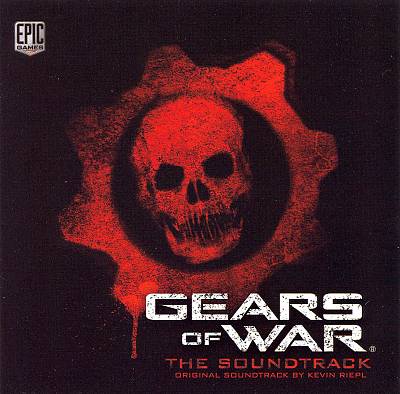
Kevin Riepl: Over the last 15 years, I’d say I am pretty happy with my career so far. I still see these first 15 years as being, somewhat, the beginning stages of my career. Even though I have been happy and grateful for every opportunity I’ve had over the years, and proud of every bit of work I’ve done, there is still a road ahead of me that I plan to navigate and conquer. That being said, a few notable projects come to mind that may be considered landmarks along the way. For example on the video games side of things, working on my first video game title with Epic Games, which led to steady work with them for a few years including their blockbuster game, Gears of War. Even though I had a decent amount of additional music on projects prior to working with Epic, I feel that my work on Gears of War finally provided me with the opportunity to speak with my own voice which helped provide a nice foundation for future video game work and beyond.
Working on my first Warner Bros. BATMAN animation feature back in 2014 was significant as it led to 2 more animated features and has now resulted in me working on a new animated series with them. To me, film is a bit different. My film career is still a bit younger than my video game career. Some films I’ve worked on have been great and may not be noticeable landmarks until later on. Some film projects I’ve done may stay in the past and some may help working relationships blossom and lead to future, bigger film projects. Time will tell. Like I mentioned, I’ve loved every film I’ve worked on and have enjoyed working with every person involved with each one, but some working relationships last longer than others. Again, only time will tell.
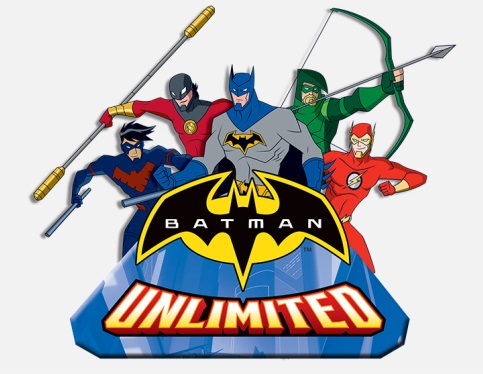 Some of the toughest assignments to crack are usually not because of the musical ability or type of project. It might be due to creative conflicts with the director, producer or whomever. When those situations arise, you can only do the best you can within your means to help move the project along smoothly.
Some of the toughest assignments to crack are usually not because of the musical ability or type of project. It might be due to creative conflicts with the director, producer or whomever. When those situations arise, you can only do the best you can within your means to help move the project along smoothly.
As my career moves along, I would certainly like to work on more films with bigger budgets. Big enough budgets to allow me the opportunity to comfortably provide these films with a well-deserved live recorded score. Nowadays it’s common practice for films to have extremely tight budgets, expecting composers to deliver an amazing ‘live sounding’ score from within ‘the box’ – a computer using digital samples. Yes, there are ways to help bring sampled orchestral scores more life, but ask any working composer and they’ll forever say, nothing can replace the real thing. And nothing can.
For more information on Kevin Riepl and to sample some of his music, see the composer’s web site at http://www.kevinriepl.com/wordpress/
Special thanks to Greg O’Connor-Read for his help in facilitating this interview.

